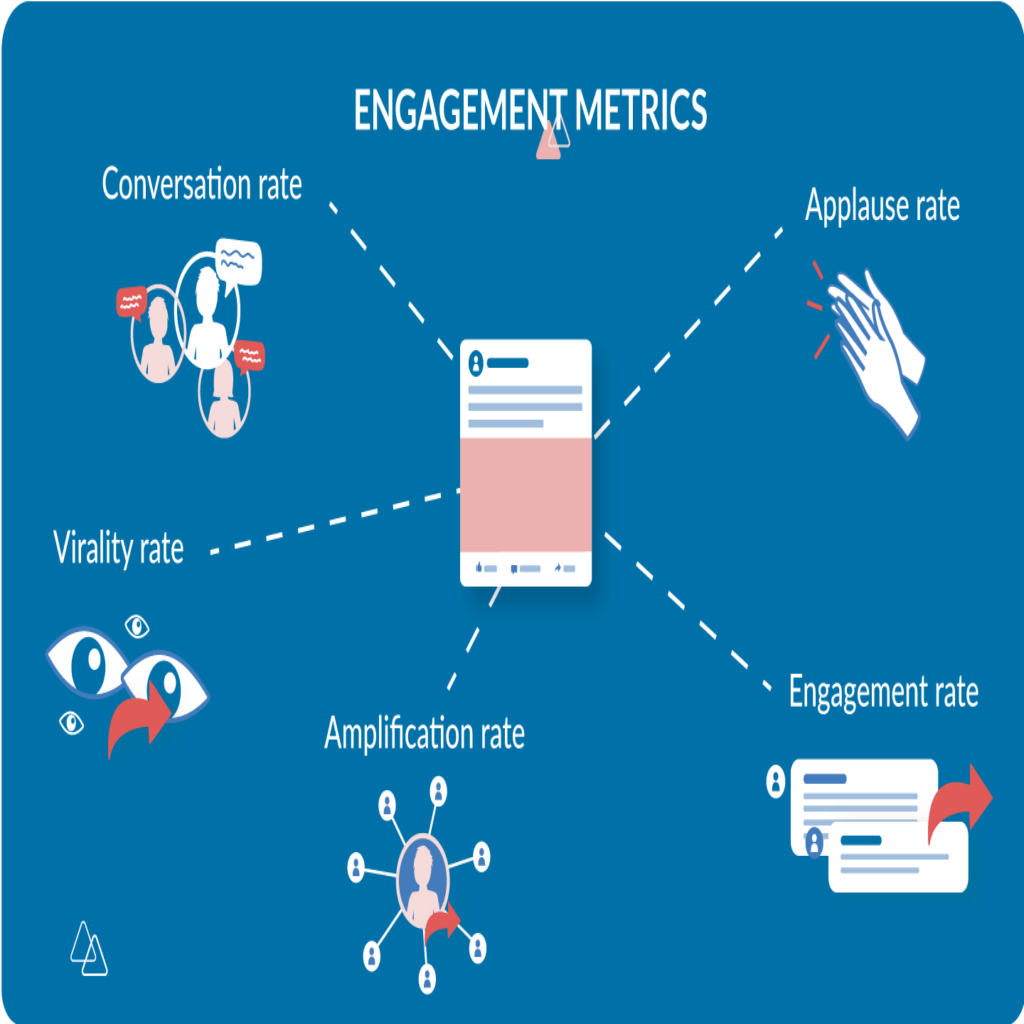The phrase “social media engagement” refers to interactions that track how frequently users interact with your content. It includes likes, shares, and comments on most platforms, but the precise interactions vary depending on the platform being used.
For instance, there are various ways to engage on Facebook, from simply liking a post to sending a message or mentioning a page. Clicks on your profile, call-to-action buttons, and any other tabs on your page Post interaction: comments, likes, and shares. Direct messaging interaction: sending a message to a page or replying to a message Engagement with other pages: mentioning your page and leaving comments on their posts. This aerial perspective is excellent for spotting trends when comparing engagement rates over months or even years. But it would be best if you had additional metrics to discover the bigger picture and figure out how to improve. The secret is knowing what engagement is and how to analyze it in detail.

Why is social media participation so crucial?
Why is engagement so important? In short, because social media platforms say so.
As time goes on, organic reach on all social platforms is getting smaller, but concentrating on posts that receive a lot of engagement is worthwhile. Posts that receive more attention will benefit your account over the long term. Facebook’s News Feed algorithm heavily relies on “meaningful engagement” as a signal. Simply put, social media posts that receive more thoughtful and active responses are more likely to be seen by more people. Businesses can also satisfy their customers by paying attention to what they say. It is an excellent example of how we use social media to learn about our audiences because engagement fosters relationships.
How can engagement on social media be increased?
As a business, one should aim for quality rather than just quantity. In business, it’s not just about how much work you put in. The standard of the content must also be taken into consideration. Social media channels must be active and engaging for users and customers to have a positive experience that keeps them coming back. Increasing social media interaction with these people will also introduce them to potential new customers.
1.Understanding where to find engagement metrics

You can access your engagement metrics through social media networks’ native analytics. This content can be used in an offline or online relevancy game by looking at where your audience is most engaged. You can monitor what people say about your brand on social media with the help of these dashboards. You can view engagements, which include likes, comments, shares, and impressions, in these native dashboards. Third-party tools can be used to manage your social media channels and track and comprehend engagement metrics. Specify objectives and metrics.
2. Understand the different social media metrics and set goals
You should know the metrics you want to track for each social media goal. If your campaign’s metrics don’t indicate success, it might be time to change your plans or reconsider your strategy. To engage with content, goals must be set. Depending on your objectives, you’ll determine what kind of content will yield the best results. For instance, you’ll need shareable content if you want a post to receive more shares. Shares and comments on your posts are the metrics that go along with that: how many people interacted with them and in what ways?
3. Recognize your platform
When updating your social media strategy, you must take into account the distinct tones of each social media platform. Social media platforms are well-known for undergoing constant change. In 2022, brands used more than 15 networks, but there are better courses of action than using each one. Find out which platforms are most effective for your audience and business before focusing on them. Know who they are
4. Understanding your target audience
Understanding your target audience is one of the ways you can increase engagement on your social media posts. This group will pay close attention to updates and be most interested in what you say. For instance, LinkedIn, which focuses on professional networking and is already used by many B2B companies, can be a great option if you are a B2B company. Because they will be the recipients, brands should always consider their audience when writing content. Always think about what would be best for the audience when choosing the most appropriate content to post or figuring out how to share it on social media.
5. Recognize the elements of a post’s appeal
Each method works only for some networks to get content to perform well. On social media, however, live videos, images, and short videos are three of the most captivating formats. Customers seeking authenticity may also be interested in organic feedback posts highlighting particular brands’ goods or services.
6. Make content that can be shared
Remember to like, comment, and share on social media, as many people have said. But did you know there are additional covert ways to advertise your post? For instance, short-form videos and images that are visually appealing are more common and are shared more frequently. You can concentrate on these kinds of posts for an intriguing, fresh perspective in the niche. In addition, your social media engagement should increase if you give people something positive to post on social media.
Also Read: Why Blogging is Important for Business
7. Know when to post on social media
Make and create enjoyable, admirable, or valuable posts because people will like and share them. The best times to post on social media Success on social media depends on raising engagement levels. You can more effectively plan posts by learning the best time to publish your content based on your target platform and audience.

Utilizing social media in moderation is the best strategy. Avoid “over-sharing” because it can alienate people and make it difficult for them to distinguish between you and competing brands. Regular but infrequent posting will keep your audience interested and ensure that the content you’re putting out there is of high quality.
8. Put your plan into action
“Execute your plan” is one of our final social media recommendations. To ensure maximum sucess the campaigns should be tested, planned, and experimented. You will need to maintain a fluid or flexible approach to continue working effectively in social media because it is constantly evolving.
Conclusion
Increasing your social media engagement can help your company multiply. Even if you don’t intend to amass a sizable fan base, it’s still a crucial component of your brand’s identity. It offers you a valuable channel for communicating with the people who are the heart and soul of your business—it’s client. Regularly publish pertinent content, engage with customers, and establish a social media presence that accurately represents your brand. Set measurable objectives and commit to achieving them. Although the process is lengthy, you’ll soon see the benefits if the suitable systems and tools are in place, you will soon see the benefit.
















